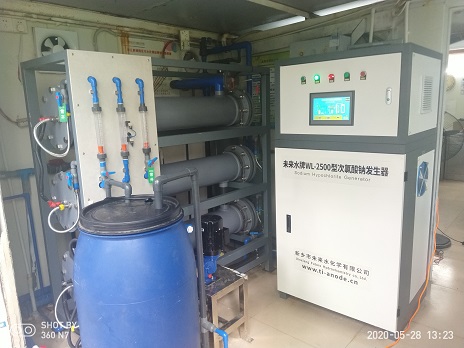Sodium hypochlorite generator principle outline:
The main reaction process of sodium hypochlorite generator electrolysis can be expressed by the following equation:
NaCl+ H2O = NaCLO + H2↑
Electrode reaction: Anode: 2Cl- - 2e → Cl2 Cathode: 2H+ + 2e → H2
Solution reaction: 2NaOH + Cl2 → NaCl + NaClO + H2O
The electrolysis process of the electrolytic salt water type sodium hypochlorite generator is an electrochemical reaction process. It only needs salt and water as raw materials, and the sodium hypochlorite solution is pure in quality. Although the chemical principle is simple, there are many technical indicators that affect the economy, so sodium hypochlorite occurs The design of the electrolytic electrode should consider various factors, and design and manufacture according to the characteristics of compact and reasonable structure, energy saving in operation, convenient operation and maintenance, high reliability in operation, and long service life of equipment. Sodium hypochlorite solution is added accurately, safe to operate, easy to use, easy to store, non-toxic to the environment, no gas leakage, and can be added under any environmental and working conditions.
Benefits Include:
Sodium hypochlorite is generated through a highly efficient in-situ process allowing economic production according to the actual demand.
Hypochlorite product is generated on-site and on-demand from inert feedstocks, reducing or eliminating common issues with chemical storage and handling.
Low strength solution at a stable concentration means minimized decomposition of active chlorine in solution always available.
Product generated with minimized disinfection by-product formation and further cost savings can be achieved via off-peak production scheduling.

|



